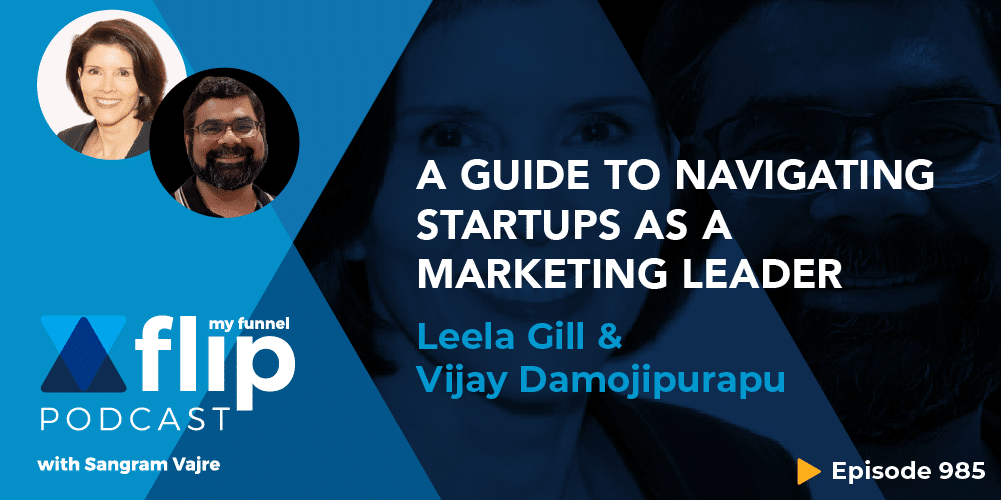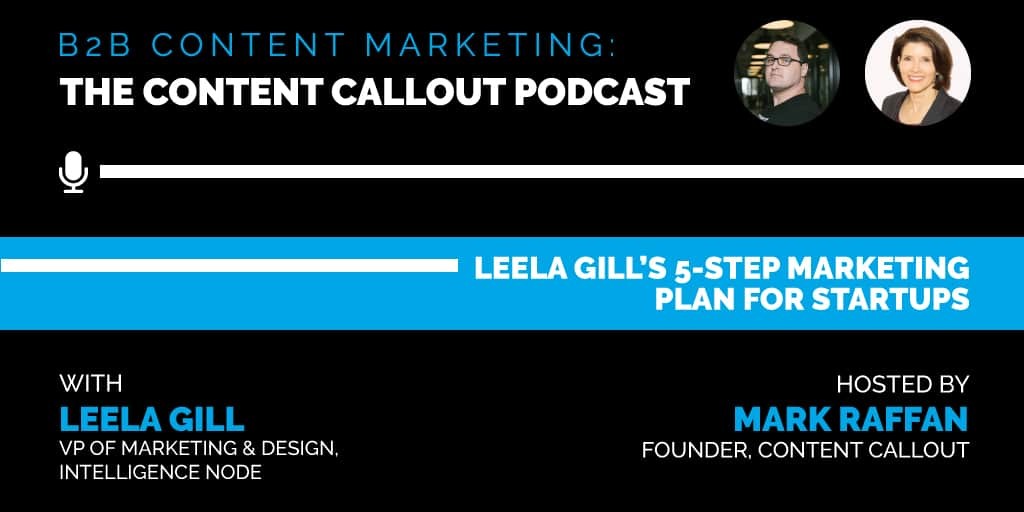Demand gen and good content should go hand-in-hand. But the level of competition for businesses in Series A/Series B funding is intense, and very few make it out of startup mode. So what does it take to get to the next level? How can you develop great content and demand gen? What do you prioritize? Leela Gill answers these questions and more in this special two-part episode series of the Content Callout podcast!
Outline of This Episode
- [1:50] Major challenges to scale Series A/Series B businesses
- [6:13] Develop the demand gen engine
- [9:39] How to understand the “need”
- [11:45] How to approach the development of content
- [16:17] Create a feeling in the reader
- [19:40] How to connect with Leela Gill
Major challenges to scale Series A/Series B businesses
According to Leela, Statista says there are over 1 million startups formed globally every year. The average age of a startup is between 5–10 years. Sixty-one percent of startups are B2B and 39% are B2C. And only approximately 4,300 startups exit the ecosystem. Of those, 200 are “unicorns,” 100 of which are from the United States. That’s the world you’re stepping into as a marketing leader.
Startups go through seed funding, Series A, Series B, Series C, and Series D/E. Leaders in the A and B world are clawing for survival. There are a lot of challenges that require a certain personality to be successful. You have to do a lot with very few resources. You’ll likely have a small marketing budget, and you need to ramp up revenue.
In Series B, you get a few more people and a little more money, but you have to triple your revenue growth. What personality goes into that world? Someone innovative, ready for a challenge, and willing to be a catalyst for change. They are creators at the heart of what they do.
What should you prioritize?
The level of competition is intense when you reach Series A/B. There are so many pressures to do everything all at once. Prioritization is critical at this level. Pipeline and demand gen is the growth engine of your business. If you aren’t growing, you’re out of business. So you must prioritize demand gen followed second by content.
They’re intertwined, but you can find success with demand gen with just a few pieces of content. Leela believes demand gen is getting your message out to as many people as possible—the traditional method. But she also believes in having a target account list that is personalized and that you go after that messaging.
Create a need for your products
There’s another element to demand gen: creating a need for your products. That’s the golden nugget. You need to understand your customer’s pain points so well that you create a need. You make your product a must-have.
Who actually needs bottled water? In the ’80s, big CPG companies convinced the world that the water coming out of their tap wasn’t adequate. Suddenly there was a huge marketplace around purified bottled water. It’s a great example of marketers creating a need for a product.
What need can you create in your ecosystem? It should be an authentic and true need—you want to be ethical. Finding an actual need is the crux of demand generation. Too many people start with product marketing that isn’t aligned with a need, and it becomes hard to sustain campaigns. But if you base your marketing on the major pain point, frustration, or the opportunity, it helps to maintain the content and demand gen.
How to understand the “need”
Understanding the need begins with talking to your customers. Why did they choose to buy your product? Actively listen for keywords they use around their pain points. If you can prioritize that, your messaging will be better than others.
The major need people have around content is typically for building SEO and rankings. But the problem is that they have no time to create content themselves. The frustration and pain point is the project management of freelance writers and content creators. The opportunity is the SEO and thought leadership, but the pain is associated with the management. Once we keyed in on that for Content Callout, it accelerated our growth.
How does Leela approach the development of content to create a feeling in readers or listeners? Listen to the whole episode to learn more!
Related Posts:
Influencers, Brand Ambassadors and Raving Fans – and Why You Need All Three
For marketers, influencers, brand ambassadors, and raving fans can create a significant differentiator…
Marketing as a Revenue Generator and Catalyst for Change
Marketing is a change catalyst, calling customers to change and jump on, and it also helps the organization…
A Guide To Navigating Startups as a Marketing Leader
It can’t be understated: Being a marketing leader of a startup can be crazy and chaotic. Out of the million…
A 5-Step Marketing Plan for Startups
As a marketing professional working in a startup, do you know how to help your company grow revenue? How is…
Building A Diverse And Equitable Business: The Role Of Marketing
Jesse Jackson once said, “Inclusion is not a matter of political correctness. It is the key to growth.” This…
B2B Marketing: What We Can Do To Help Save The Planet
The COVID-19 pandemic is the biggest business challenge of a generation. Organizations scramble to establish…
Early-Stage Marketing: A Five-Point Leadership Framework
The COVID-19 pandemic is the biggest business challenge of a generation. Organizations scramble to establish…
Social Media: Getting Above the Noise
The COVID-19 pandemic is the biggest business challenge of a generation. Organizations scramble to establish…
Thriving In B2B SaaS Through Account-Based Marketing With Leela Gill
The COVID-19 pandemic is the biggest business challenge of a generation. Organizations scramble to establish…









